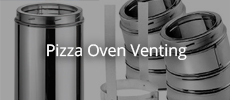Announcement
Collapse
No announcement yet.
36" Corner Build in Minnesota
Collapse
X
-
I spent some time today after grinding and sanding the hearth/counters yesterday to layout the floor for dome and entry. I’m planning a thermal break between the inner arch and vent arch. I have some 1/2inch fiber cord and fiberfrax to seal arch. Is a 1/2inch an appropriate gap between the dome floor and entry way? I’ve seen some builds use a stainless steel channel on top of fiber board used on the floor. Thoughts?2 Photos
-
AlSi is comparable to CaSi, Do you know what the compression strength is? it should be at least or around 70 PSI.@5% compression.
Leave a comment:
-
I don’t have the calsil board. My plan was to put 3 layers of 1in unifrax duraboard made from alumina silica I got at Smith-Sharpe (see photo). Should I have something different.1 Photo
Leave a comment:
-
This always happens when the drill breaks through to the other side. Drilling a smaller pilot hole first reduces the size of the divot.
It actually provides better drainage towards the hole so is actually an advantage. Like Randy pointed out the cal sil board will bridge over it quite ok.Last edited by david s; 09-07-2021, 08:51 PM.
- Likes 1
Leave a comment:
-
As long as it is not right where the dome will sit my guess is that it will be just fine. The calsil board is pretty stiff stuff and would seem to be unlikely to sag. If you are really worried you could patch it up. You are not real far from me if you are very concerned i would be happy to swing by and take a look to put your mind at ease.
Randy
- Likes 1
Leave a comment:
-
You just have a big weep hole. IMHO, between the insulation and the floor bricks, they will span this area. No one will ever remember that the whoops is there.
- Likes 1
Leave a comment:
-
OK, I had a large gathering for Labor Day weekend and haven’t made good progress but today I went to pop through the weep holes and ended up with a large crater.
how bad is this? Can I just patch with surface bonding cement or another product? It’s right in the heart of where the oven will sit.
2 Photos
Leave a comment:
-
Thanks for the feedback on the countertops. I took the forms off the other day with no issues. The 3 piece support legs worked well for removal. I only had to make one cut with the reciprocating saw for the removal.
Today I worked on no-weld IT 2.0. Will put it all together tomorrow and work on the floor and arch configurations.
4 Photos
Leave a comment:
-
I used a Hardin concrete angle polisher that had a GFI in the power cord as well as variable speed and water supply line. It is built specifically for wet polishing concrete counters. They are spendy but better safe than sorry. These do make a mess, I was decked out in full wet gear.
Leave a comment:
-
Be careful when recommending the use of electrical tools that are not designed for wet operation. A dedicated concrete polishing machine is fitted with an electrical cutout to prevent electrocution. They also have a variable speed control. A standard angle grinder does not have a speed control. A much slower speed is required for controlled polishing.
- Likes 1
Leave a comment:
-
I used Stadea wet/dry diamond polishing disks on my angle grinder. Available @ amazon for about $35 if you time it right. Together with a throw-away harbor freight angle grinder, it works well if you can also set up a slow stream of water onto the countertop. It does make a mess though. Get some foulies!
Leave a comment:
-
For polishing the counter i bought a set of pads off Amazon that i put on my R.O. Sander. It did a pretty good job but i completely destroyed the sander. As for building the enclosure i knid of cut a stud to the height i wanted in the front then saw what would clear and look good for the back. So it was pretty much just flying by the seat of my pants. I have a bad habit of winging things like that , it really drives my wife nuts because I just build to a evolving picture in my mind and she just can't see it no matter what I do to explain it.
Leave a comment:
-
Looking good. Are you going to plan on polishing the concrete? If so do it before you put any cladding on the base. It makes more than a bit of a mess. It is not hard to do though.
Leave a comment:
-
Our own muscles collectively ache looking at that pour!
Great work! Really looking terrific!
Good of you to hold yourself to a timeline - it can get away from you without one at times!
Keep the pics and enthusiasm coming!
Barry
- Likes 1
Leave a comment:





Leave a comment: